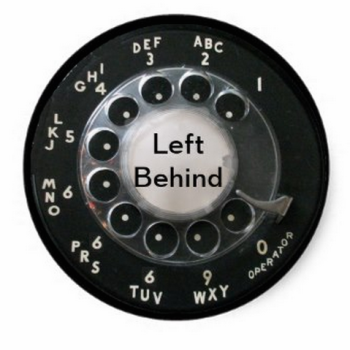So I watched the first episode of In Plain Sight on Hulu.
USA is carving out a decent niche with its entertaining hour-long crime shows. This one is a bit like a female version of Burn Notice — emotionally damaged, cynic-with-heart-of-gold protagonist offering wry voice-over narration with the case of the week serving more as background for longer character arcs, etc. Add those two shows to the quirky whodunits Monk and Psych and they’ve got a respectable lineup that, thanks to the more modest ratings expectations of basic cable, isn’t going to leave viewers hanging due to abrupt cancellation.
Anyway, I wanted to see at least the first episode of this show to find out which of the USA Network’s contradictory ad campaigns for it was more accurate. I’ve been seeing the network’s nonstop promos for In Plain Sight for months (my fiancee* is a Criminal Intent addict). A few weeks back, those promos abruptly changed. They switched from portraying Mary McCormack’s character as a sassy action girl (the great-at-her-job, bad-at-her-life bit) to portraying her as a nurturing surrogate mother to the people in her charge as a U.S. marshal in the witness protection program.
The new spots seemed like they were promoting an entirely different, and incompatible, show. In the new promos, In Plain Sight looked like Touched by a Marshal. Or like Judging Amy, if Tyne Daly had been packing heat. My guess is the more sentimental promos were some kind of attempt to make the show more appealing to some sought-after female demographic. (But that’s just a guess — I don’t pretend to understand the thoughts or motives of TV executives and programming directors.)
Now that I’ve seen the show, it seems to me that the reinvented, mother-Mary promos were pure spin. The show was very much like what the original promos portrayed and not at all like the sentimental fare being marketed in recent weeks. This seems to me to be a Good Thing, since the latter imaginary show really didn’t seem all that appealing, whereas the actual show is quite fun (see this review from Alan Sepinwall).
The odd thing about all this was the attempt to retool the marketing for the show without retooling the actual show. I mean, I’m glad they didn’t retool the show, but it seems strange to think you could advertise something different while offering the same product. The hypothetical viewers that USA hoped to reach with its re-edited, nurturing promos presumably weren’t responding positively to the original, more accurate promos, so USA changed the ads in the hopes of persuading them to watch the show. But it’s still the same show.
If these viewers didn’t like the original promos, then the odds are they won’t like the show itself either. I guess the idea is to trick them into watching the show in the hopes that once they tune in, they’ll like it despite themselves. But I’m not sure that this bait-and-switch tactic is the best way to go about trying to expand your audience.
And but so anyway, my point here isn’t really about In Plain Sight, but rather about presidential candidates.
Selling a candidate is, in some ways, a lot easier than selling a new TV show. The USA Network has to do more than trick viewers into pulling a lever or checking a box. They can saturate their airwaves (cable-wires?) with ads that spin their show any way they like, but that’s not going to keep viewers tuning in to a show that turns out to be nothing like the one they’re selling. Those viewers will sit through half the show, realize it doesn’t resemble the advertised product, and — click — they’ll go back to watching The Ghost Whisperer instead.
Political campaigns don’t have to worry about that. They don’t have to worry about whether their actual candidates correspond in any way to the re-edited, re-imagined candidates their ads are selling. Voters, unlike viewers, don’t need to be tricked every week, they only need to be tricked once every four years. Political campaigns can advertise anything at all — “compassionate conservative,” “fiscal responsibility,” “national security,” “we do not torture” — and they only have to worry about maintaining the ruse up through election day. Once voters leave the booth they’ve bought the product and they’re stuck with it for the next four years.
One more reason that selling a candidate is easier than selling a TV show: No reviews. Here’s metacritic’s page for In Plain Sight. You could watch a year’s worth of the Sunday morning political talk shows and everything that cable news has to offer by way of campaign coverage and you’d rarely encounter the degree of thoughtful, skeptical scrutiny that even a summer-fill-in show on basic cable faces from TV critics.
– – – – – – – – – – – –
* Yep. Unless, of course, she gets a better offer from Vince D’Onofrio.












